No new arrangement for siblings | DECEMBER 26
Due to the perception prevalent since the middle of the 19th century that immigrants, preferably from Europe, were needed to populate the vast expanses of Argentina, the country’s immigration policy was comparatively generous. But already following WWI, the country’s needs for manpower were perceived as saturated, and by the 20s, administrative barriers to immigration were put up. With victims of Nazi persecution seeking refuge, immigration policy was tightened even more. Nevertheless, many thousands of German Jews as well as political adversaries of the regime found refuge in Argentina. Among them was Max Busse. His sister, Anna Nachtlicht, had heard about plans of the Argentine government to ease immigration and make it possible to request permits for siblings. Max immediately went to make inquiries, but the results were sobering. In this December 26th letter, he is forced to tell her that no such plans seem to exist. Relatives in France had offered the Nachtlichts to stay with them to wait for their visas for a third country. Perhaps, Max suggests, it would be easier to apply from there.
Stolen art | DECEMBER 25
Jewish furriers began to do business at the Leipzig Trade Fair in the middle of the 16th century. For hundreds of years, Jewish traders were allowed into Leipzig only during the fair, but even so, they significantly contributed to the city’s wealth. In the wake of the legal equalization of the Jews in the 19th century, Jewish furriers began to settle in Leipzig, concentrating on a street known as Brühl. Over time, Jews helped to turn the city into an international center of the fur trade. After 1933, many Jewish furriers fled to centers of the trade abroad. Siegmund Fein, born in Leipzig in 1880, was still in Leipzig in 1938. His and his wife’s ordeal under the Nazis culminated during the November pogroms. Siegmund Fein was incarcerated at the Buchenwald concentration camp from November 11th to 30th and badly maltreated. After his release, he was refused appropriate medical care. On December 20th, he fled to Brussels. The painting displayed here, “Head of a Girl” by the German classicist painter Anselm Feuerbach was confiscated by the Nazis – along with other works of art from the Feins’ collection.
At the mercy of Nazi authorities | DECEMBER 24
Not long after power was handed to the Nazis, the motto “Police – your friends and helpers,” which already during the Weimar Republic often reflected a hope rather than reality, lost any hint of meaning for opponents of the regime and for the country’s Jews. A law introduced as early as February 1933 stipulated that police officers who resorted to the use of firearms against people perceived as enemies of the regime were to go unpunished. As part of an unholy trinity, in tandem with the SA and SS, the police quickly became an instrument of Nazi terror. Therefore, obtaining a police clearance certificate was probably not the easiest of the requirements of would-be immigrants applying for US visas. On December 24th, 1938, this important document was issued to Ernst Aldor, a resident of Vienna.
Bureaucracy without empathy | DECEMBER 23
America was struggling with economic difficulties, and an unfavorable attitude towards “aliens” prevailed in Congress. Among much of the populace, the idea of admitting large numbers of Jewish immigrants was not popular, and President Roosevelt was not inclined to relax America’s immigration restrictions. Thus, when Alice Rice of Virginia Beach tried to facilitate the immigration of her Czech relatives, she received the standard answer from the acting chief of the Foreign Office’s visa division, Eliot B. Coulter. He emphasized the importance of proving that the applicants were not likely to become “public charges” and pointed to the provisions of the 1917 Immigration Act, which, in addition to economic prerequisites, made immigration dependent on a host of conditions grounded in considerations of a political, racial, moral and health-related nature, as well as stating that a person 16 or more years of age was eligible for immigration only if literate. Despite the valiant efforts of Frances Perkins, Secretary of Labor, whose department was in charge of immigration and naturalization issues at the time, US policy was not revised to accommodate the needs created by the wave of refugees coming out of Nazi Germany. Interestingly, one of the justifications for this was that the German quota was actually never filled – without mentioning, of course, that this was a result of the “public charge” provision, which made it impossible for many German Jews, who had been systematically driven into poverty by the Nazis, to successfully apply for visas.
No respite for Jews at German spas | DECEMBER 22
Already in the late 19th century, hostility towards Jews was common in German spas, some of which advertised themselves as “free of Jews.” In the Baltic and North Seas, entire islands presented themselves as anti-Semitic. Nevertheless, some had a small Jewish population. On the beaches of the North Sea health resort of Wangerooge, swastika flags were displayed as early as 1920, just after becoming the symbol of the Nazi party. When the Nazis had been voted into power, the situation became even harder for the island’s Jews. On December 22nd, 1938, Fritz Jacoby, himself a beneficiary of the work of the Boston Committee for Refugees and a recent arrival to the United States, turned to Willy Nordwind, its co-chair, on behalf of Marga Levy, a 24-year-old native of Wangerooge. In the wake of the pogrom of November 9-10, all of her male relatives had been incarcerated, there was no money and no way to make a living. Thus, the grateful Mr. Jacoby implores the Committee to provide the young woman with a “domestic affidavit” which would enable her to “work day and night to feed her parents.”
Stigmatizing bureaucracy | DECEMBER 21
On August 17th, a provision was added to the Law on Alteration of Family and Personal Names, forcing German Jews to identify themselves as Jews by adding the name “Sara” or “Israel” to their given names. This provision was slated to come into effect on January 1st, 1939. The registry office in charge and local police were to be notified of the implementation of the provision until the end of January. This notification by the Friedmann family, dated December 21st, 1938, to the local police authorities in Schwandorf, Bavaria, falls into this context. It also communicates that the registry offices in charge have been notified of the imminent name changes of Amalie, Bruno, Lillian and Georg Friedmann.
New demands of an old man | DECEMBER 19
While Dr. Hermann Mansbach and his wife, Selma, had left their home in Mannheim and relocated to Haifa in September 1938, their son, Herbert, a dentist like his father, was stuck in Switzerland, trying to join his parents. The young man had left Germany following a Nazi decree according to which the conferment of doctorates to Jews was to cease immediately. Obtaining a certificate for entry into Palestine proved to be difficult, and to make things worse, Herbert had been defrauded of all his money. On December 19th, Hermann Mansbach gave an account of his new life in Palestine to the Frank family in Zurich, who were helping his son, and to Herbert himself. He describes the difficulty of starting over poor as a result of Nazi regulations and his struggle to learn English and Hebrew and to make money. As if that weren’t enough, political unrest was simmering in the background. Mrs. Mansbach adds that she and her husband never leave home at the same time in order to avoid missing a patient. Things are hard, but, as Dr. Mansbach says, their lot is certainly better than being in a concentration camp.
A safe place for Marianne | DECEMBER 18
For many Jewish children in Germany, going to school had become an ordeal: the constant anti-Jewish indoctrination of German students was poisoning the atmosphere, teachers as the agents of this policy rarely supported the Jewish children, and the mere act of getting to school and back could be like running the gauntlet. As a result, Jewish schools began to proliferate, and those who could afford it sent their children to boarding schools abroad. When Ruth Berlak, in Berlin, received this friendly note from St. Margaret’s School in Westgate-on-Sea, Kent, informing her of the acceptance of her 13-year-old daughter, Marianne, as a pupil, little more than a month had passed since the Nazi regime had decreed the removal of Jewish children from German schools. Marianne’s maternal grandfather was Rabbi Dr. Leo Baeck, the president of the Reich Representation of Jews in Germany. Her father’s father was Leo Berlak, the chairman of the Association of Jewish Heimatvereine, clubs devoted to the maintenance of local traditions.
Dependent on the kindness of others | DECEMBER 17
As the wife of a successful architect, Anna Nachtlicht had enjoyed social prestige and experienced years of material comfort. However, in 1932, the Great Depression forced the couple to auction off their art collection, and in 1933, Leo Nachtlicht lost his occupation. Eventually, the couple was left with no other choice but to rent out rooms. The couple’s two adult daughters, Ursula (b. 1909) and Ilse (b. 1912) contributed to the household. But the situation became untenable. As Anna Nachtlicht writes to her brother Max in Argentina on December 17th, the family had “every reason” to fear that they were about to lose their apartment in Berlin-Wilmersdorf, on top of everything else. While there was realistic hope that their daughters would soon find employment in England, Anna and Leo’s efforts to find refuge abroad had remained largely unsuccessful. Relatives on Leo’s side in France had agreed to house the couple temporarily, until a third country would offer them a permanent home. Anna Nachtlicht clearly resented having to ask for help and deplored the dependence on others, but the constant decline of the situation and dark forebodings left her no choice. She had heard that Argentina was about to change its immigration policy and make it possible to request permits for siblings. With undisguised despair, she asks her brother in Buenos Aires to immediately request a reunification with her and facilitate their emigration.
Total arbitrariness | DECEMBER 16
One of the tools in the hands of the Nazis to terrorize Jews was arbitrary incarceration: the Enabling Act of March 24th, 1933, handed the regime the legal basis for the perfidious institution of “protective custody”: persons deemed to “endanger the security of the people” could be detained without concrete charges. Ostensibly, the policy was aimed at political adversaries. In fact, however, it was frequently used against Jews. The salesman Hans Wilk was among its first victims: in 1933, at 24 years of age, he spent over four months at the Lichtenburg concentration camp. During the November pogroms of 1938, he was among the roughly 30,000 Jewish men incarcerated in concentration camps. On December 16th, he was released from the Sachsenhausen concentration camp in Oranienburg near Berlin. The requirement to report immediately to the State Police in his home town of Potsdam indicated that the harassment was not yet over.
The plain truth | DECEMBER 15
Julie Jonas in Hamburg and her daughters, Elisabeth and Margarethe, had sworn to report to each other truthfully on their emotional well-being. Almost daily, there was an exchange of postcards. For a few weeks, the two girls had been in England. Their father, the lawyer Julius Jonas, had outlasted several Nazi laws aimed at pushing Jews and opponents of the regime out of the legal professions. But with the issue of the “Fifth Decree Supplementing the Reich Citizenship Law” on November 30th, 1938, he was disbarred. December 15th was his birthday. Already on the day before, Julie Jonas had written to the children that their nerves had worn “rather thin” and that they weren’t at all in the mood for a birthday. Nevertheless she bravely tried to show her joy about the girls’ well-being.
With the blessings of the Nazis | DECEMBER 13
Until 1938, dozens of Jewish periodicals managed to withstand the mounting pressure of the regime. However, even since 1935, they were no longer publicly for sale, and since 1937, their freedom of reporting had been severely curtailed. After the Pogrom Night of November 9th to 10th (later known as “Kristallnacht”), a comprehensive prohibition brought the over-130-year history of the Jewish press in Germany to an abrupt halt. In order to be able nevertheless to spread official communiques through a paper aimed specifically at Jews, a Jewish newsletter, the “Jüdische Nachrichtenblatt” was established, the first issue of which was published on November 23rd in Berlin. Albeit edited by Jews, it was under total control of the Reich Ministry of Popular Enlightenment and Propaganda. On December 13th, the Vienna edition appeared for the first time.
Contradictory messages | DECEMBER 12
The banishment of Jews from public spaces was far advanced by now. Already in 1933, Jewish creative artists had been dismissed from state-sponsored cultural life. Since November 12th, 1938, Jews were no longer admitted even as audience members at “presentations of German culture” and were banished from concert halls, opera houses, libraries and museums. More and more restaurants and shops denied access to Jews. On Dec. 12th, 1938, the Jewish Telegraphic Agency pointed out a striking discrepancy: while abroad, the “German News Bureau,” the central news agency of the Reich which followed the directives of the Propaganda Ministry, spread the information that from January 1st, 1939, certain anti-Semitic measures would be relaxed, quite the opposite had been communicated to Jews inside the Reich. One fact, however, was not hidden: the goal was to prompt all Jews to emigrate, “also in the interest of the Jews themselves,” as the Bureau put it.
Nightmares | DECEMBER 11
When, in November 1938, Gertrude Fichmann gave her 12-year-old son, Harry, a diary in which to record the family’s emigration experience, she had no idea at which point they would leave and where their journey would take them. Nor could she have anticipated just how eventful a time was coming up for Austrian Jewry in general and for her family in particular. As almost every day brought new, disturbing incidents, Harry would record the latest developments regularly and articulately. Witnessing the frightening events and watching the fear of the adults in his life clearly took a toll on him: on December 11th, he describes having spent the night tortured by nightmares.
Between a rock and a hard place | DECEMBER 10
Lilly and Sim, a married couple in Mährisch Ostrau (Moravia), had so far been spared major hardship – at least on a personal level. But fear was mounting in the city near the Czech-Polish border because new rumors came up on a daily basis about which cities the Germans would occupy next. The worst news was about the fate of fellow Jews: in this December 10th, 1938, letter, Lilly tells her friends abroad about no fewer than 8,000 Jews of Polish extraction, who within three days had been forced to leave the city, some of them after having lived there for 20, 30 or even 40 years. Her greatest wish – getting out – was hard to realize, and she simply could not face joining a refugee transport to a random country “with an impossible climate” to work as farm hands. Meanwhile, Sim was facing a promotion, but given the total uncertainty of the future – with an agreement between Czechoslovakia and Poland pending, the couple did not even know which nationality they were at this point – the prospect did not occasion much joy.
From exile to exile | DECEMBER 9
With the expressiveness of a poet, the jurist Paul Schrag on December 9th, 1938 describes to his friend Max Gutzwiller in Basel his circumstances after emigration. Since July, he had been living in a Manhattan hotel with his wife and baby. Apart from emigration and the professional uncertainties it occasioned, Schrag also had simple human matters to cope with. In September, his father had unexpectedly passed away, and now his sick mother needed to be taken care of. He experienced the catastrophe of humanity in the 1930s very profoundly and hoped for the onset of a “profound emotional and moral countercurrent.” A little bit of sanguinity was brought into his life by his little son, whose bliss remained untouched by current events and change of location.
Money: the make-or-break | DECEMBER 8
The reply of the secretary of the Kenya Jewish Refugee Committee, Israel Somen, to Paul Egon Cahn’s request for help was rather reserved: the young man urgently wished to bring his parents from Cologne to join him, but he didn’t have the £100 which were to be paid to the British Colonial Office in Mombasa for entry permits. The financial situation of the Committee was utterly strained, so that Somen could only advise the young man to submit an orderly application with the immigration board in Nairobi. In addition, he would have to furnish proof that he was able to pay for his parents’ upkeep and that he had paid the fee for the permits. Only then would it be conceivable that the authority would follow the request, provided the Refugee Committee would give him security. This, too, Somen emphasized, was contingent on Paul Egon Cahn’s ability to prove that his parents would not be a financial burden on the Committee or on the local authorities.
Finally: positive answers! | DECEMBER 7
Every now and then, the diary of the Viennese boy Harry Kranner-Fiss deals with topics appropriate to a 12-year-old: doing mischief at school, excitement about new clothes, a “grown-up” haircut, playing with friends. But more often than not, Harry’s eloquent entries reflect his keen awareness of the threatened state of Jews in Austria in 1938: they deal with an uncle’s deportation to the Dachau concentration camp, his aunt being locked out of her apartment and the key being confiscated, his mother’s tears of fear and worry, with curfews, public humiliation and violence. No wonder that his stepfather was incessantly trying to find a way to leave the country. Promising reactions were slow in coming, but on December 7, 1938, just days after receiving a promise of an affidavit for immigration to the US, Harry was excited to record that from Australia too, a positive answer had arrived. According to an earlier entry, his stepfather had called on the British commission for Australia, which was visiting Vienna, in early November, but had been told to expect a waiting period of eight to nine months.
Merciless bureaucracy | DECEMBER 6
Otto Neubauer was worried that his efforts to facilitate his relatives’ emigration would come to naught. With the US intent on denying entry to refugees “likely to become a public charge,” he knew his developmentally disabled 34-year-old brother, Ernst, might be denied entry. He had no doubt that his father, Maximilian, a resident of Mannheim, would never leave Germany without his other son. On December 6th, 1938, Otto assured Herbert Reich, who had expressed his willingness to help the Neubauers immigrate to the US, that Ern(e)st was “harmless” and that his needs were minimal. To increase his brother’s chances to be admitted, Otto reasoned that it would be helpful to procure two affidavits.
Ungrateful fatherland | DECEMBER 5
All six sons of the Hamburg industrialist, S. Anker, were among the 85,000 Jewish soldiers who went to battle for Germany in World War I. Two of of them, Heinrich and Richard, belonged to the 457 Hamburg residents among the 12,000 Jewish fallen. Otto Anker, b. 1883, survived, badly wounded. After the Nazis had been voted to power in 1933, his sons left the country and tried to get their parents to do the same. However, decorated with the Iron Cross and married to a non-Jewish woman, Otto Anker felt safe. The gratitude of the Fatherland kept within limits: in 1938, Otto Anker’s business was “aryanized.” This ID, stamped on December 6th, is marked with a conspicuous “J.”
Banks as accomplices | DECEMBER 4
As double earners, the Nathorffs did quite well materially for a number of years: the pediatrician Hertha Nathorff was the director of a children’s home and baby nursery run by the Red Cross in Berlin Charlottenburg, and her husband, Erich, was an internist at the Moabit Hospital. On the side, the couple had a private practice. Shortly after the Nazis came to power, both lost their positions, but they maintained their joint practice until September 1938, when the licenses of all Jewish physicians were revoked. Erich Nathorff was among the few Jewish physicians who were allowed to tend to the needs of Jewish patients exclusively as so-called “caretakers of the sick.” However, during the November Pogroms, he was incarcerated at the Sachsenhausen concentration camp. On December 4th, Hertha Nathorff confided to her diary that due to the insecure situation, she had “sent away” her son and that she was having financial problems. Due to the Nazis’ policy of blocking the accounts of Jews whose financial situation would have permitted them to leave the country, she had no access to her money.
Action, not anger | DECEMBER 3
Reacting to the November Pogroms, thus far the most massive outburst of anti-Jewish violence in Germany, the December editorial of the Aufbau does not make do with expressions of pain and mourning but forcefully calls to counter Nazi brutality with positive action. “The answer to barbarism has always been enlightenment,” it quoted US Commissioner of Education J.W. Studebaker, a staunch believer in democracy and the central role of public discussion and civic education in making it function. The editorial reassured Jewish brethren in Germany that all of America was united in working on “putting an end to barbarism in Central Europe.” It wholeheartedly endorsed the government’s position, propagating education and enlightenment as means to fight back “this gravest of assaults on human culture.”
Kindertransport | DECEMBER 2
Following the November Pogroms, individuals and groups in England, among them faith-based organizations, demonstrated through their relentless refugee advocacy and organizing how effective determined action by citizens can be. Among those who lobbied the British government specifically on behalf of Jewish children was the Society of Friends (Quakers). After initial rejection by Prime Minister Chamberlain, a delegation composed of Jews and Quakers met with Home Secretary Hoare, following which the government gave permission to issue visas and facilitate the children’s entry into the country. Within the shortest time, host families were recruited, donations solicited, tickets booked, transit visas organized (the children traveled via Hoek van Holland). The network of Jewish and non-Jewish helpers included Dutch volunteers who welcomed the children at the border, gave them food and drink and accompanied them all the way to the ship in Hoek van Holland. The first group arrived at Harwich on December 2. The organized efforts to rescue Jewish children from Nazi Germany later came to be known as “Kindertransport.”
Painful uncertainty | NOVEMBER 30
Many Jews in Germany reacted to the November pogroms with despair, existential fear, and even suicide. But the situation was also highly vexing for those who had managed to flee abroad. From afar they had to watch how their synagogues went up in flames, how Jews were arrested by the thousand and locked up in concentration camps, how Jewish property was stolen or destroyed. The worst, however, was the uncertainty about the well-being of beloved relatives and the torture of not being able to help them quickly enough or at all. One of the many emigrants expressing such feelings was Erich Lipmann. In this letter from Ohio to his mother and grandmother in Lower Saxony, he describes his helplessness but also mentions efforts to get support from official places.
Their only hope | NOVEMBER 29
In 1903, in the wake of the Kishinev pogrom, the British government agreed to allow European Jewish settlement in a territory then known as the “East Africa Protectorate,” today’s Kenya. Due to massive opposition from within the Zionist movement, the plan, known by the misleading name “Uganda Scheme,” did not come to fruition. 35 years later, Paul Egon Cahn, most recently a resident of Cologne, found himself in Rongai, Kenya. After the November pogroms, the 20-year-old car mechanic began to try to get his parents out of Germany. While European settlers and members of the local Indian community in Kenya opposed the immigration of Jewish refugees, the “Kenya Jewish Refugee Committee,” which had facilitated his immigration, was supportive. Thus, the young man turned to its secretary, Israel Somen, for help: he urgently needed the £100 the British Colonial Office charged for two entry permits.
Help among friends | NOVEMBER 28
Willy Nordwind, co-chair of the Boston Committee for Refugees, tirelessly endeavored to save Jews from the grip of the Nazis by helping them immigrate to the United States. Himself an immigrant from Germany and familiar with the requirements, he helped organize affidavits and saw to it that newcomers with fields of expertise as heterogeneous as “tobacco and clothing retail business,” “tourism,” “expert buyer and salesman of hosiery,” and “wholesale fish dealer” found employment in America. Most of the people he helped were total strangers to him, but some of his beneficiaries were personal acquaintances. On November 28th, 1938, his friend Seppel pleads with Nordwind to find a special arrangement for him that would speed things up. Requests for visas had risen sharply since the pogrom night of November 9th to 10th (later known as “Kristallnacht” or “Night of Broken Glass”), and the usual waiting period for the processing of affidavits was far too long.
An unexpected gesture | NOVEMBER 27
Thanks to his thriving practice in the Steinbühl neighborhood of Nuremberg, Dr. Adolf Dessauer had achieved a certain prosperity. His generous apartment offered a children’s room for his sons, Heinz and Rolf, maid’s quarters, space for his practice and a waiting room, a living and dining room, and, not least, a bedroom with furniture made of cherry wood. In 1937, due to the effects of anti-Semitic legislation targeting doctors, Dr. Dessauer was forced to give up his practice. Emigration was the only solution. But how to take the beautiful bedroom furniture abroad? The Nazis rendered this concern obsolete: During the November pogroms, in the night of November 9 to 10 (later known as “Kristallnacht” or “Night of Broken Glass”), the furniture was smashed to pieces and a portrait of the Nobel laureate, Paul Ehrlich, slashed and ruined. Only a few days after the shock of the brutal destruction, the Dessauers experienced a rare gesture of decency. A total stranger returned the portrait, which was by now perfectly restored.
The future of humanity and culture | NOVEMBER 26
No one reading the November issue of the Aufbau could have missed the front-page editorial message in bold print: under the heading “The Great Trial,” forceful language is employed to decry the abject failure of “the heads of state of the so-called democracies,” who have sacrificed Czechoslovakia to Nazi Germany. Jewish refugees are left stranded in no man’s land in Bohemia, in Germany, the Nazis are dealing an “economic death blow” to the Jews, the British are jeopardizing the Zionist project, and “little more than a faint memory” remains of the Evian Conference, summoned in July to tackle the problem of resettling Jewish refugees from Nazi Germany. Surely, this is “an era of complete sinfulness.” Will those under threat finally brace up?
Art in crates | NOVEMBER 24
Had Austria’s history taken a normal course, Hanna Spitzer, a private teacher, would probably have stayed in Vienna and grown old there as a respected member of society. As a daughter of the late jurist and patron of the arts, Dr. Alfred Spitzer, she was co-heir to a major art collection comprising works by such greats as Kokoschka and Slevogt. Egon Schiele was represented too – among other works, with a portrait of Alfred Spitzer, who had been his sponsor and lawyer, and later his estate trustee. But the flood of anti-Semitic measures which had been unleashed by the “Anschluss” (the annexation of Austria to Nazi Germany) made it unbearable and dangerous to stay: this copy of a tax clearance certificate dated November 24, 1938 testifies to Hanna Spitzer’s efforts to gather the papers required for emigration. Already in January, she had arranged for the shipping of 11 containers of household effects and paintings to Melbourne and a delivery to the address of her sister, Edith Naumann, in Haifa.
Placing trust in strangers | NOVEMBER 23
Could Willy Nordwind of the Boston Committee for Refugees—an organization not dealing specifically with unaccompanied child immigrants—be entrusted with the well-being of a 16-year-old girl? The Relief Organization of Jews in Germany was not ready to take chances: rather than just sending Frieda Diamont on her way, the organization turned to the National Council of Jewish Women in New York to ascertain Mr. Norwind’s integrity. The Council’s Merle Henoch passed on the case to Jewish Family Welfare in Boston, Mass., where Nordwind, too, was based. For her there was no doubt: as generous a helper as Willy Norwind must be a trustworthy ally.
Banned from his art | NOVEMBER 22
The works of the Expressionist painter and graphic artist Bruno Gimpel were classified as “degenerate” during the Third Reich. Neither his voluntary service as an aide in a military hospital during World War I nor his “mixed marriage” with an “Aryan” woman spared him the usual repressive measures. On November 22nd, 1938 he received a letter from the Reichskammer der Bildenden Künste, the Nazi authority in charge of the visual arts, which yet again denied him membership and banned him from all branches of his profession. In 1935, this institution of the Third Reich had once before rejected a request for admission by the Dresden artist. Since 1937, he had no choice but to make a living by giving drawing lessons to Jewish children.

